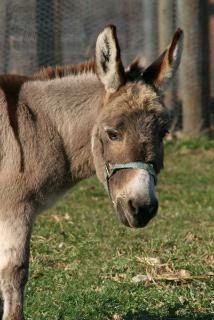Polar Bear – interesting facts
July 28, 2010 | In: Animal facts for kids

scientific name Ursus maritimus
size
Weight: male 770-1430+ lbs.; female 385-660+ lbs.
Height: standing, male to 11′; female 6-8′
adaptations/colorations
Color: white or yellowish; white serves as camouflage
Body. heavy layers of blubber up to 4″ thick; provides insulation & buoyancy
Ears. small (less heat loss)
Feet. heavily furred to insulate & provide traction on ice (also allows very quiet movement); large; partially webbed (good oars)
Fur. thick
Hair: transparent, hollow, & conducts solar energy to black (mottled) skin
Smell: good (for hunting)
Swim: can swim 43+ mi. per day
Vision:. keen
Environment: white=camouflage; extremely well adapted to cold/aquatic
behavior
Den: don’t den up (except pregnant females) as do most northern climate bears; males may den up if weather extremely severe
Migration: seasonal; follow food supply; can range up to 2000 mi. in 1 yr.
Personality: solitary except during breeding season or females with cubs; occasionally congregate at exceptional food source, such as whale/walrus carcass, or at start of ice flow (like Churchill)
Populations. maintain distinct population within distinct territories
Storms. don’t like the wind because it is dehydrating • will avoid if possible
reproduction/lifespan
Lifespan: 25-30 years; maximum 33 years
Sexual Maturity. female 4-5 years; male 5-6 years
Mate. wild April – June; captivity February – June
Implantation. delayed
Gestation. ~8 mos.
Cubs. 1 – 3; 10″ long; 21-25 oz; born December – January in captivity; leave den April (17-24 lbs.); remain with mother 28-40 months; mother’s milk rich (31% butterfat) • cubs grow quickly reaching 70-100 lbs.in their first year
diet
Wild. primary food is ringed seals (2nd is bearded seals), harp seals, hooded seals, & walrus & whale carcasses when available; in summer, also eat berries, crabs, plants, small rodents, seaweed, starfish, sea cucumbers, etc.
habitat/range
sea ice/waters; islands; coasts of Arctic Ice Cap • prefer ice that is periodically fractured by sea currents where seals are abundant





1 Response to Polar Bear – interesting facts
Baric | Interesting facts
August 11th, 2010 at 12:07 pm
Polar bears have wide front paws with slightly webbed toes that help them swim. They paddle with their front feet and steer with their hind feet. Paw pads with rough surfaces help prevent polar bears from slipping up on the ice.
Polar bears have been known to swim 100 miles (161 kilometers) at a stretch.